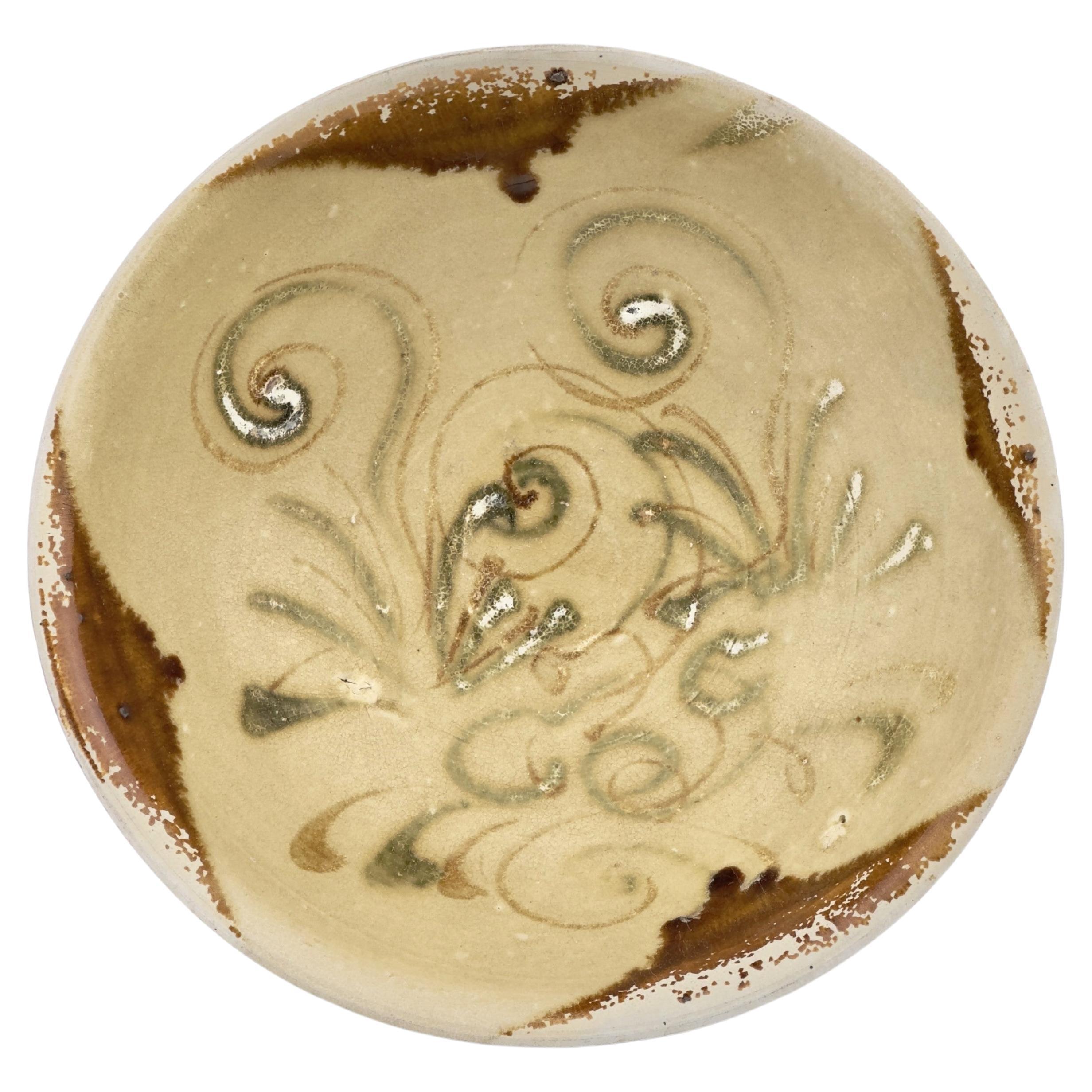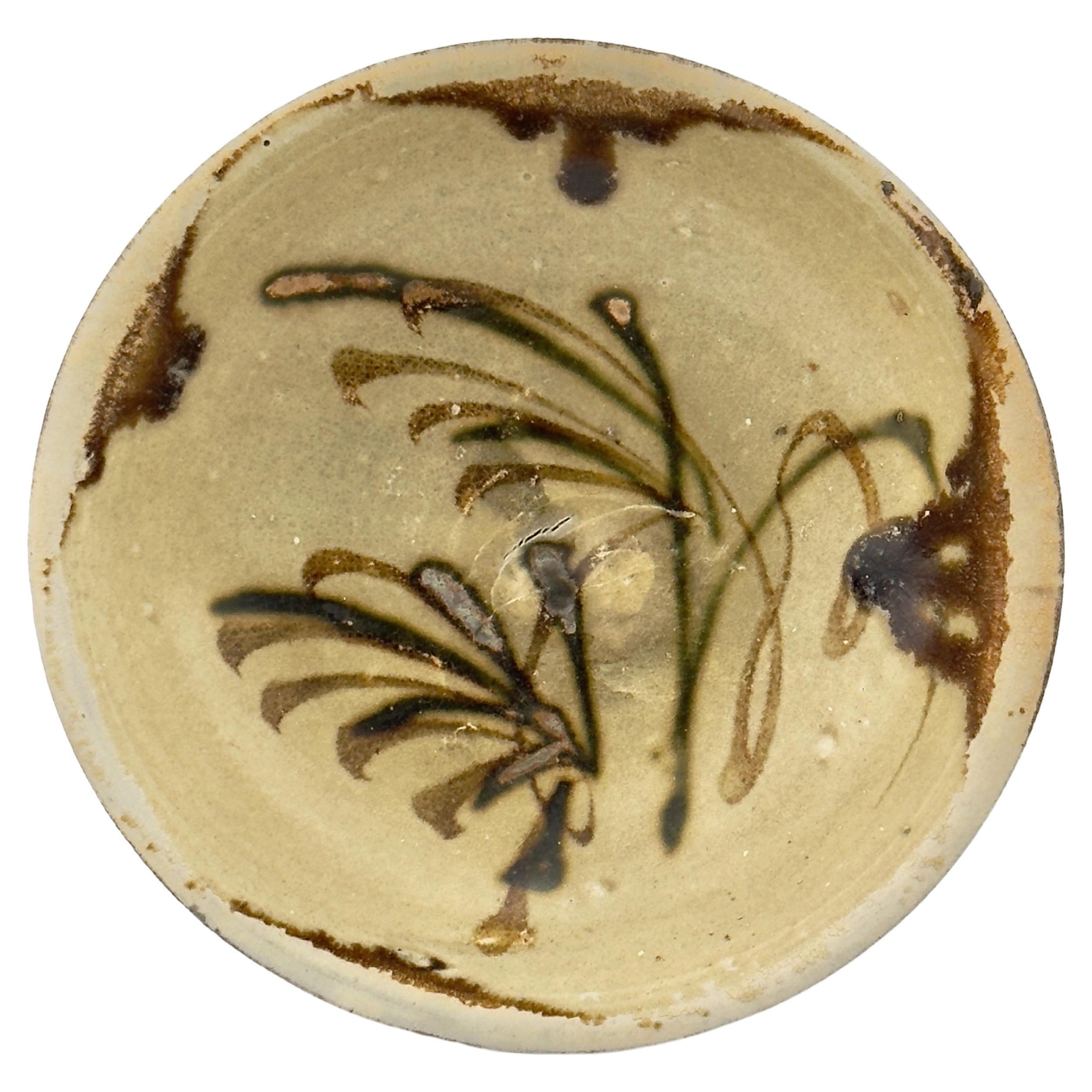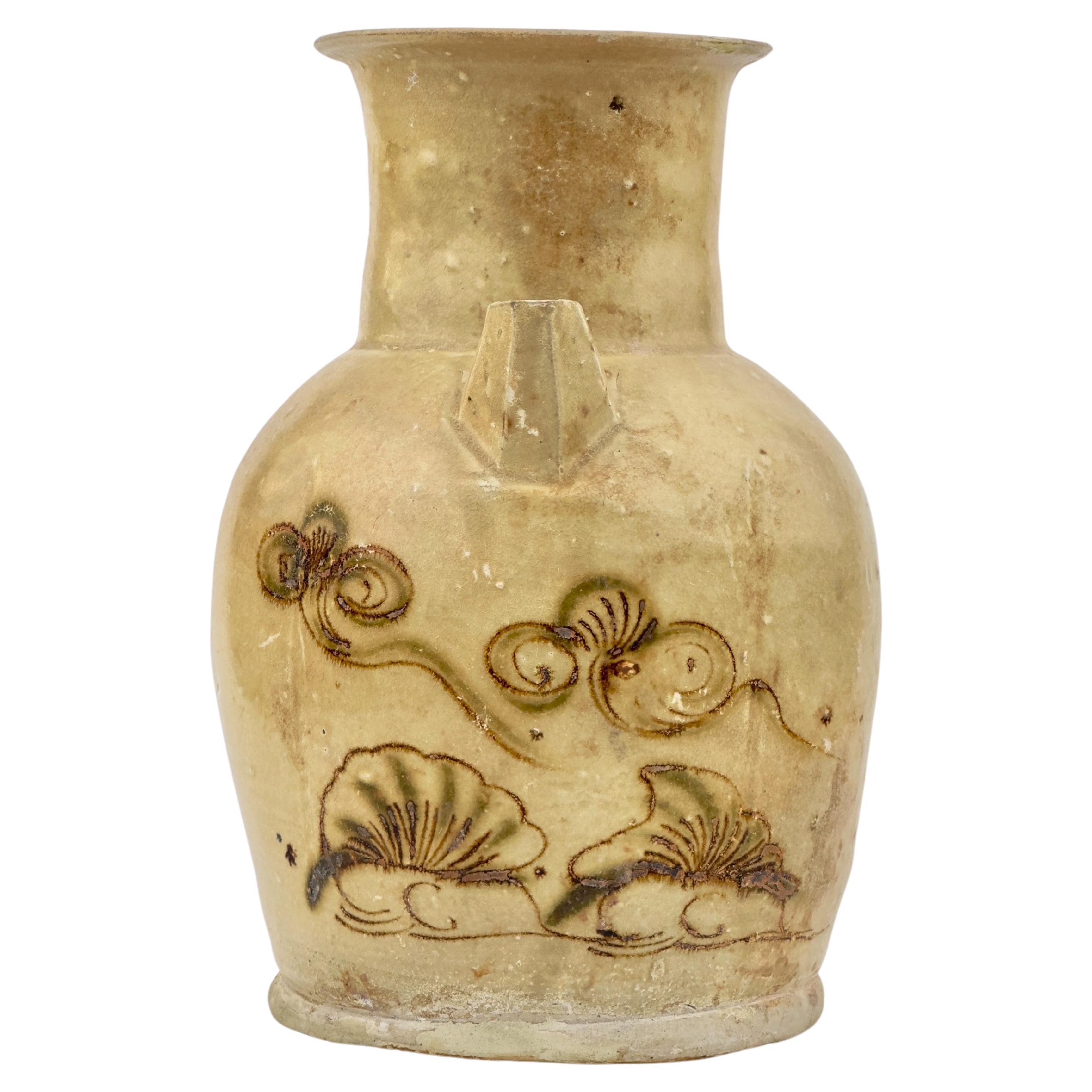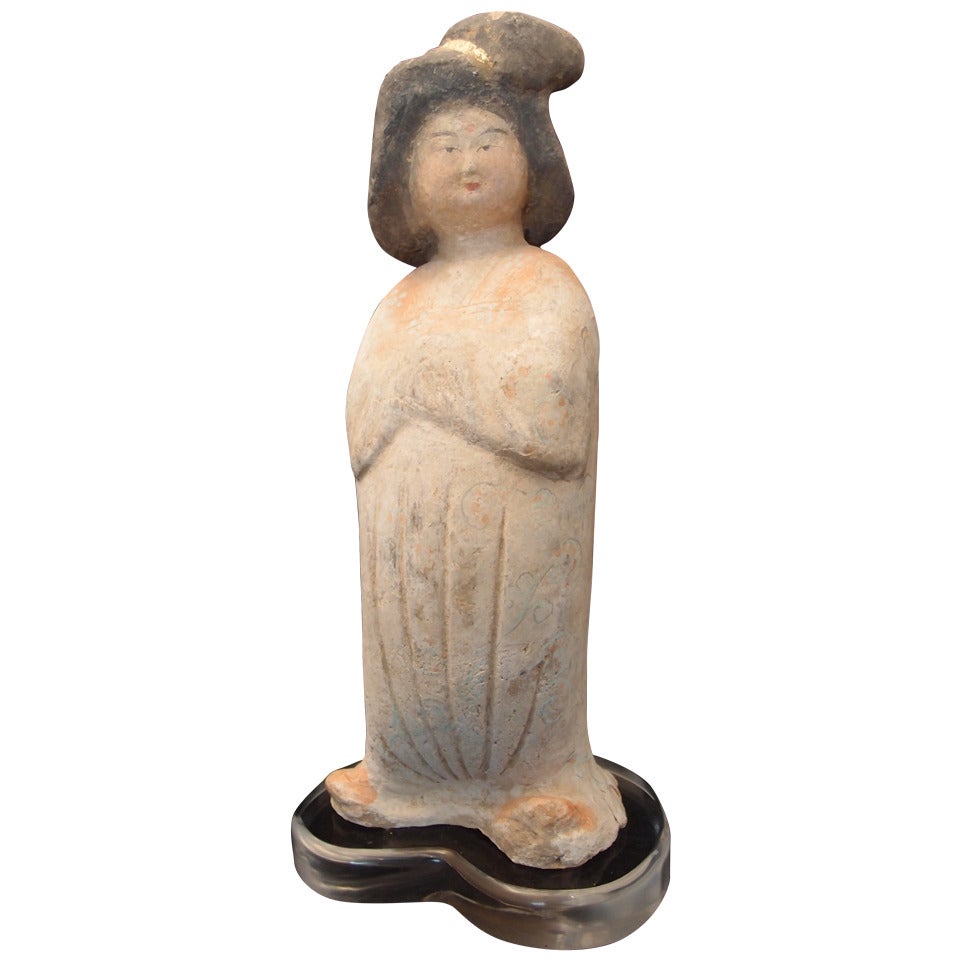Items Similar to Belitung ship, stoneware box with embossed pattern, Tang Dynasty.
Want more images or videos?
Request additional images or videos from the seller
1 of 9
Belitung ship, stoneware box with embossed pattern, Tang Dynasty.
About the Item
A Tang Dynasty stoneware box from the Belitung shipwreck, featuring embossed patterns on its lid. Stoneware boxes from the Tang Dynasty, like the one recovered from the Belitung shipwreck, were often used for storing cosmetics, medicines, spices, or other small valuable items. The intricate design signifies that it may have been intended for an owner of considerable status or used for important ceremonial or trade purposes.
Period : Late Tang Dynasty
Production Date : Circa 830
Made in : Hunan province
Found/Acquired : Indonesia, Belitung Island
* The Belitung Hoard Changsha Ware
The Belitung ship held three main types of Chinese "wares" in the form of bowls: Changsha ware (produced in kilns in Tongguan), the majority of the items, were originally packed in either straw cylinders or "Dusun" storage jars; White-ware, manufactured in the Ding kilns and including the earliest known intact underglaze blue and white dishes; and Yue ware from Zhejiang Province.
The ship has given archaeologists two major discoveries: the biggest single collection of Tang dynasty artefacts found in one location outside of China, the so-called "Tang Treasure"; and the Arabian dhow, which gives a new insight into the trade routes between China and the Middle East during that period.
References : Belitung: The Afterlives of a Shipwreck(Book by Natali Pearson), Photo by Michael Flecker
- Dimensions:Height: 1.58 in (4 cm)Diameter: 2.76 in (7 cm)
- Style:Tang (Of the Period)
- Materials and Techniques:Earthenware,Glazed
- Place of Origin:
- Period:
- Date of Manufacture:618-907
- Condition:Minor fading.
- Seller Location:seoul, KR
- Reference Number:1stDibs: LU9577237798212
About the Seller
New to 1stDibs
Joined in the past six months.
4.5
Vetted Seller
These experienced sellers undergo a comprehensive evaluation by our team of in-house experts.
Established in 1999
1stDibs seller since 2023
Typical response time: 1 hour
- ShippingRetrieving quote...Ships From: seoul, Korea South
- Return PolicyA return for this item may be initiated within 10 days of delivery.
More From This SellerView All
- Belitung ship, Large Changsha bowl with plant patterns, Tang PeriodLocated in seoul, KRThe edges have been dipped in four places with brown, probably iron-oxide. The well of the bowl is freely painted in green and coffee coloured brown. Period : Late Tang Dynasty Prod...Category
Antique 15th Century and Earlier Chinese Tang Antiquities
MaterialsPottery
- Changsha Ewer, Tang DynastyLocated in seoul, KRIt features two small lug handles on either side of the neck and a spout opposite the main handle. This ewer might have been used for wine or other liquids, which were poured through...Category
Antique 15th Century and Earlier Chinese Tang Antiquities
MaterialsPottery, Stoneware
- Changsha bowl with abstract pattern presumed to be Islamic symbols, Tang DynastyLocated in seoul, KRThe edges have been dipped in four places with brown, probably iron-oxide. The well of the bowl is freely painted in green and coffee coloured brown. Period : Late Tang Dynasty Prod...Category
Antique 15th Century and Earlier Chinese Tang Antiquities
MaterialsStoneware
- Changsha ewer, Tang Dynasty(618-907)Located in seoul, KRChangsha Ware has distinct and recognizable designs and motifs. Painted designs often depict flowers, vines, clouds and mountain landscapes. Some painting is simply splotches of colo...Category
Antique 15th Century and Earlier Chinese Tang Antiquities
MaterialsStoneware
- Changsha ewer, Tang Dynasty(618-907)Located in seoul, KRChangsha Ware has distinct and recognizable designs and motifs. Painted designs often depict flowers, vines, clouds and mountain landscapes. Some painting is simply splotches of colo...Category
Antique 15th Century and Earlier Chinese Tang Antiquities
MaterialsStoneware
- Sancai-Glazed Pottery Tripod Jar, Tang DynastyLocated in seoul, KRThe globular body is supported on three claw feet and is covered in a splashed-glaze of amber, green and cream color, which stops short of the unglazed base. Date : Tang Dynasty(61...Category
Antique 15th Century and Earlier Chinese Tang Antiquities
MaterialsEarthenware
You May Also Like
- Chinese Tang Dynasty Pottery Court LadyLocated in Austin, TXPainted pottery figure of an opulent Chinese court woman with up-swept hair and standing in a simply draped robe from the Tang Dynasty (618-907 AD). Her beauty is illuminated by the ...Category
Antique 15th Century and Earlier Chinese Tang Antiquities
MaterialsPottery
- Pair of Tang Dynasty Painted Pottery SoldiersLocated in Austin, TXA well modelled pair of Tang dynasty painted pottery soldiers. The warriors portrayed standing, dressed in form fitting, elaborate layered Armor with fitted helmets. The breastplate...Category
Antique 15th Century and Earlier Chinese Tang Figurative Sculptures
MaterialsPottery
- Fine Tang Dynasty Pottery Horse, Oxford TL TestedLocated in Greenwich, CTTang dynasty pottery statue of standing horse with removable saddle, Tang dynasty 618-907, come with Oxford authentication TL test certificate. Oxford test num...Category
Antique 15th Century and Earlier Chinese Tang Sculptures and Carvings
MaterialsTerracotta
- Tang Dynasty Terracotta Camel Sculpture, 1st CenturyLocated in New York, NYA Chinese Terracotta camel from the Tang Dynasty. To the people of China’s Tang dynasty (618-907), very few animals were as useful and revered as th...Category
Antique 15th Century and Earlier Chinese Tang Antiquities
MaterialsTerracotta
- Chinese Tang Dynasty Painted Pottery Model of a CamelLocated in Austin, TXA powerfully sculpted Chinese Tang Dynasty pottery model of a camel. The camel is portrayed in a walking stance, long neck extended, with head held high, mouth askew chewing cud. The...Category
Antique 15th Century and Earlier Chinese Tang Antiquities
MaterialsPottery
- Tang Dynasty Sancai Glazed Pottery Camel, TL TestedLocated in Austin, TXAn evocative Chinese Tang dynasty (618 to 906 AD) sancai glazed pottery model of a braying camel. The camel is well modeled, standing foursquare upon a rectangular plinth, neck raised, head thrown back, and mouth open in either a defiant, or triumphant, bray. Although sancai means "three color", this particular camel is glazed with only two colors - mostly in amber, with patches of straw glaze mimicking the large patches of fur along the camel's legs, humps, head and neck. TL tested...Category
Antique 15th Century and Earlier Chinese Tang Antiquities
MaterialsPottery
Recently Viewed
View AllMore Ways To Browse
Brushed Copper Ornament
Han Dynasty Green
Design Amsterdam
Office Furniture Suite
Pair Of 20th Century Armchairs
Living Room Divider
Doris Blau Rugs
Bronze Box
Danish Signed Chair
Vintage Midcentury Cocktail Table
Table Lamp Bronze France
Pair Beads
Ordinary Furniture
Large Painted Vase
Large Chandelier Us
Leaves Chair
Chair 28
Clear Glass Vase Italy





